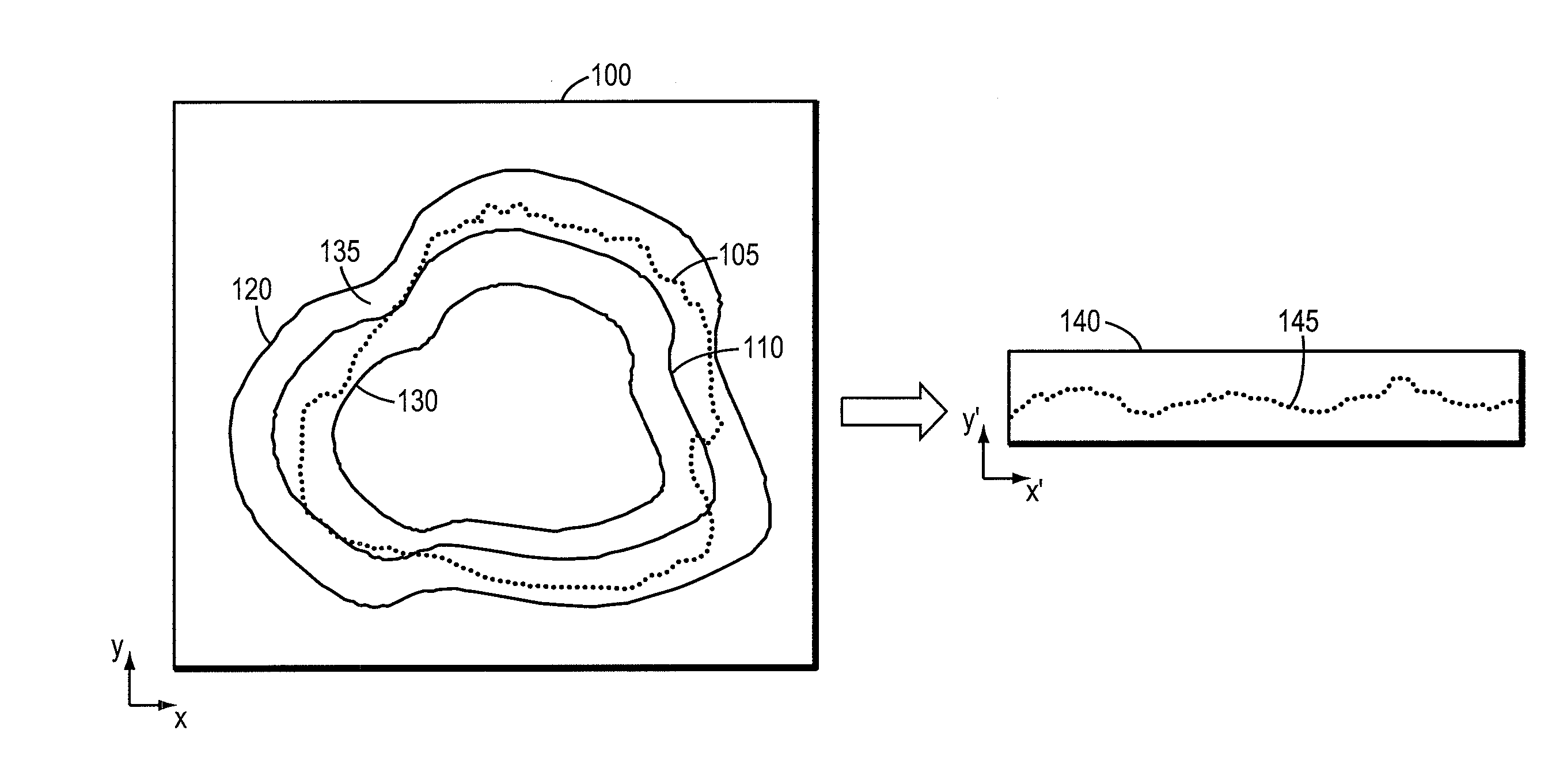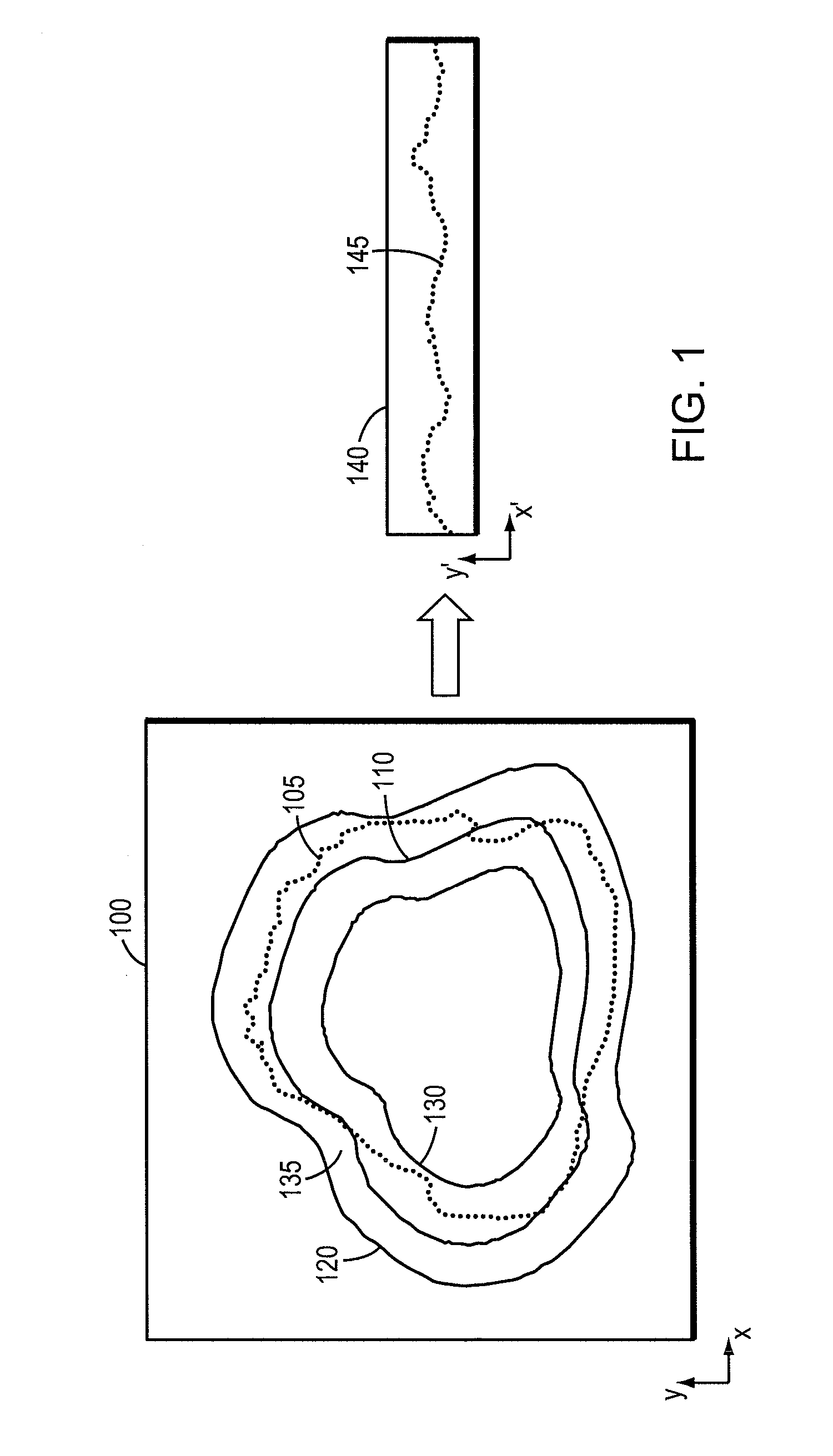Methods and systems for segmentation using boundary reparameterization
a segmentation algorithm and boundary reparameterization technology, applied in image enhancement, image analysis, instruments, etc., can solve the problems of inability to segment medical ultrasound images, time-consuming and laborious, and medical ultrasound images are intrinsically difficult to segmentation algorithms, so as to facilitate cleaning of binary images
- Summary
- Abstract
- Description
- Claims
- Application Information
AI Technical Summary
Benefits of technology
Problems solved by technology
Method used
Image
Examples
Embodiment Construction
[0028] Referring to FIG. 1, an image 100 of an organ or lesion 105 is used to plan and / or assist with various medical procedures. The image 100 can be an individual two-dimensional image, a two-dimensional sectional image or slice through a three-dimensional image, a three-dimensional image, or any combination thereof. The image 100 can be obtained using one or more devices such as a CT scanner, an ultrasound device, an MRI device, a PET scanner, and / or an x-ray device, or any other suitable imaging modality as commonly used in the art. The image 100 may be used by an oncologist, physician, or radiation technician to determine a diagnosis, the location and shape of the lesion 105 to be treated and / or to determine the parameters of a radiation treatment plan such as beam angle, beam shape, the number of beams needed to administer a sufficient radiation dose to eradicate the target lesion 105, the dose level for each beam, as well as patient positioning parameters.
[0029] In accordanc...
PUM
 Login to View More
Login to View More Abstract
Description
Claims
Application Information
 Login to View More
Login to View More - R&D
- Intellectual Property
- Life Sciences
- Materials
- Tech Scout
- Unparalleled Data Quality
- Higher Quality Content
- 60% Fewer Hallucinations
Browse by: Latest US Patents, China's latest patents, Technical Efficacy Thesaurus, Application Domain, Technology Topic, Popular Technical Reports.
© 2025 PatSnap. All rights reserved.Legal|Privacy policy|Modern Slavery Act Transparency Statement|Sitemap|About US| Contact US: help@patsnap.com



